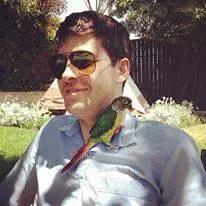There are two types of adjectives in Japanese, い-adjectives and な-adjectives. These adjectives behave in a different way.
In this lesson you will learn two adjectives, 大きい(ookii), which means big, and きれい, which means pretty. 大きい is an い-adjective, and きれい is a な-adjective.
Using adjectives after a noun
When used after a noun, there is no difference between these two kinds of adjectives, as you can see below.
| English | Japanese |
|---|---|
| The car is big. | 車 は 大きい です。kuruma wa ookii desu. |
| Am I pretty? | 私 は きれい です か?watashi wa kirei desu ka? |
When used in front of a noun, な-adjectives end in な. This is why な-adjectives are called な-adjectives.
Using adjectives in front of a noun
| English | Japanese |
|---|---|
| That is a big tree! | それ は 大きい 木 です!sore wa ookii ki desu! |
| Japan is a beautiful country. | 日本 は きれいな 国 です。nihon wa kireina kuni desu. |
い-adjectives don't change when used in front of a noun. All い-adjectives end in い, but not all adjectives ending in い are い-adjectives. Otherwise きれい would also be an い-adjective, which it is not.
You don't have to worry about remembering whether each adjective you learn is an い-adjective or a な-adjective. We will make sure to use each adjective we teach in a sentence in such a way that you will know and remember.
The nationality suffix
As you can see in the table below, we can refer to a person from a specific country by placing the kanji 人 after the country name.
| English | Japanese |
|---|---|
| Are (you) Japanese? | 日本人 です か?nihonjin desu ka? |
| (I) am not Japanese. | 日本人 じゃ ない です。nihonjin ja nai desu. |

